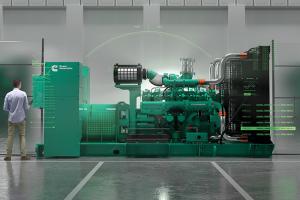CMMS software adapts to developing technologies

Image from Smart Facility Software
The use of computerized maintenance management systems (CMMSs) in hospitals continues to evolve, with smartphones, tablets and the Internet of things (IoT) playing a critical role in this evolution. In addition, many new CMMSs are designed to meet a wide range of hospital requirements.
Yet, hospitals pose many challenges to CMMS vendors. One of the biggest is the fragmented set of systems that comprise their overall CMMS environment. Also, the software needs to integrate with other hospital systems such as human resources and capital planning to facilitate seamless integration of labor, equipment and capital costs to support executive decision-making.
“The need is for one integrated CMMS platform that can address asset management and inventory control, track costs related to preventive and on-demand work orders, and maintain engineering drawings and documents to facilitate Joint Commission compliance with the environment of care and life safety in a common platform,” says Anupam Sachdev, CEO of zLink Inc., Maynard, Mass.
Complex challenges
The complexity of health systems and their organizational structures is a major challenge, says Joshua Malbogat, senior sales director at Dude Solutions, Cary, N.C. “Having to address single-site hospitals, as well as the diversified ways in which care is now being delivered — via clinics, urgent care, freestanding emergency rooms, surgical centers — all impact how a CMMS must be set up.”
There are gaps in the health care field when it comes to data standards and the capability to normalize information across an organization, according to Dustin Smith, advisory solution consultant at Nuvolo, Paramus, N.J. “That is why it is important that CMMS vendors provide tools that enable standardization efforts and ease of reporting. One example is the introduction of real-time data entry, which has spurred many CMMS providers to create mobile solutions.”
When it comes to hospitals, the sheer volume of data and the complexity of maintenance programs has always been challenging for CMMS platforms, according to George Mills, director of technical operations at JLL Healthcare, Chicago. “Most platforms are capable of supporting requirements to maintain compliance and provide documentation. That’s where implementation and project execution play a key role,” Mills says. “Data governance and standards must be developed and adhered to in order to ensure success in deployment. This requires a cross-functional team with the right skill set guided by facility management leadership.”
The growth of small, off-campus health care facilities is a key factor in the use of CMMS software. These remote facilities function in one of two ways: independently or as part of a larger hospital system. “If they are independent facilities, the software must be able to scale down to their unique needs while still being affordable,” says Aaron Peters, product manager at Phoenix Data Systems Inc., Southfield, Mich. “For facilities that are part of a larger system, the software must be flexible enough to scale up and down to fit the needs of small facilities and the system as a whole. This is especially important for reporting purposes.”
For independently run facilities with a smaller footprint but the same accreditation needs as large hospitals, it’s important to have more prescriptive implementation as well as CMMS tools and software that drive the actions of on-site engineers with less oversight, according to Smith. “To meet this challenge, Nuvolo recently enabled its ‘Connected Workplace’ to be used by small and mid-sized hospitals in addition to large health systems.”
SMGlobal Inc., Apex, N.C., offers a standard edition CMMS for sites with fewer assets to manage and smaller maintenance teams. “It has a price to suit smaller budgets,” says Sanjay Murthi, manager. “This may be of interest to small, off-campus facilities that have been hard hit due to reductions in elective procedures as well as staffing cuts.”
Mobile technology
Technologies such as smartphones and tablets continue to impact the use of CMMS software in hospitals. Phone and tablet capabilities provide a way for technicians to collect information and provide updates, especially when working remotely. Interconnectivity is more important as technology stacks become more complex with a broader array of solutions.
For example, Eagle Technology Inc., Mequon, Wis., offers the Proteus MMX mobile application for smartphones and tablets, which gives technicians in the field valuable asset and historical data. Equipment readings, usage history, security checks and maintenance data all can be collected and entered into the CMMS database in real time with this mobile application.
Millennials, who represent a large portion of today’s workforce, expect handheld technology to be simple and smart to support their work, Mills says. “Smartphones and tablets need to be leveraged to help technicians be as efficient as possible in the field, with access to all the information they need in order to execute all functions.”
The use of mobile devices is improving productivity while prompting the up-skilling of existing staff, according to Malbogat, who notes that many facility team members are closing in on retirement. “CMMS providers must embrace this component of the workforce, empowering them with solutions that make their jobs easier and provide a method for them to document the history they’ve built over the years so that it can be easily transferred to the next generation.”
Getting this technology into the hands of environmental services (EVS) is the biggest challenge, according to Mark Clabaugh, chief information officer at Smart Facility Software, Nashville, Tenn., which makes systems tailored for EVS professionals. “Issues range from the initial investment to worries of loss. Another challenge to adoption of smartphones and tablets is securing and charging numerous devices, which is a power issue. However, there are many solutions to this problem, both for securing and charging devices.”
IoT is another important factor in the evolution of CMMS. It allows for the collection of sensor data in real time, according to Harshad Shah, CEO and president at Eagle Technology Inc. “The ability to gather historical data can keep facilities managers informed so they can make sound decisions about how to invest, maintain and protect the combined assets of the overall operation. It also allows them to review key performance indicators at a glance.”
The biggest benefit of IoT is how it gives facilities managers access to information, says Jason Afara, solutions engineer, Fiix, Toronto. “By connecting CMMS to other parts of the digital infrastructure, users can pull in all sorts of data that’s valuable for planning and optimizing maintenance,” Afara says. “It could be financial information or the real-time performance of equipment.” All that information can be directed to the facility’s CMMS and used to automatically trigger maintenance when it’s needed. This eliminates guesswork and minimizes user error.
“With today’s IoT and ‘Industry 4.0,’ we’re leveraging more digitalization to interface with building management information and supervisory control and data acquisition systems that have the data that can help us understand function and failure,” says Gregory Perry, senior capacity assurance consultant at Fluke Reliability, Everett, Wash. “That is a key piece of eMaint, our CMMS software. Today’s health care field needs modern interfacing and broad CMMS capabilities.”
The use of IoT devices within hospitals is growing, says Joe Eichberger, CEO of EQ2 LLC, Camarillo, Calif., which offers the HEMS (Hospital Equipment Management System) product. “These are additional assets to be managed by the CMMS. In some cases, the equipment performs smart work/monitoring and, when interfaced properly, can provide data directly to CMMS files. EQ2 LLC has interfaced with many smart assets and will work with any IoT or equipment vendor to develop a connection.”
Range of requirements
Many CMMS products recently introduced to the hospital market are designed to meet a wide range of hospital requirements. For example, zLink Inc. offers a maintenance management platform that comprises 30 software components. It optimizes space utilization, maintenance, and management of mobile and fixed assets, and facility condition assessments for detailing deficiencies and remediation costs. “They can be quickly aggregated to provide decision alternatives for maintenance and capital planning budgets,” Sachdev says.
Nuvolo’s Connected Workplace, an integrated workplace management system, enables diverse groups within facilities, operations, real estate, clinical engineering, environment of care, IT and leadership to better understand their built environment and medical devices. It also helps ensure compliance through essential documentation for audits from various accreditation bodies.
Many new CMMSs are designed to improve productivity as well. Smart Facility Software has upgraded its health level seven (HL7) interface and its integration with ES Service Optimizer’s decision engine. The goal is to receive messages via the HL7 interface as requests. “For example, you get an A03 (discharge); we receive a request to clean the vacated bed,” Clabaugh says. “Our software finds the best employee to dispatch to that bed based on decision engine settings. When the employee uses his device to mark the task ‘in progress’ or completes the task, we alert the admission-discharge-transfer system of the bed status via an HL7 message.”
Phoenix Data Systems Inc. has introduced AIMS 3, its fifth generation CMMS. With built-in metrics and machine-learning algorithms, it can instantly alert users when they are drifting away from acceptable performance levels, costs, task results and compliance metrics. “AIMS 3 provides improved workflows, automation and information at one’s fingertips, so technicians can spend more time on the floor taking care of medical equipment and maintaining facilities,” Peters says. AIMS 3 is browser-agnostic with built-in dashboards and can be installed locally or hosted by Phoenix at one of the company’s data centers, he says.
EQ2 LLC has introduced a cloud-only CMMS configuration called “HEMS Essentials.” “The package contains the HEMS modules that we’ve found most CMMS clients select and is priced to meet all budgets,” Eichberger says. “Once installed and users are trained, the modules can provide productivity payback in less than three years.” The company also offers FastKey software, which provides hospitals with a tool for managing and tracking all key requests, assignments and retirements.
To meet the demands brought on by the pandemic, Fluke Reliability has released a new CMMS product, CleanMaint, to help hospitals manage sanitization. Optimized to manage a rigorous cleaning protocol, it’s suitable for clinics and small- to medium-size hospitals that have in-house cleaning staffs. “CleanMaint manages the cleaning and sanitization process steps, and supplies inventory, reporting, certification and history,” Perry says.
Rise of AI
What near-future advances do manufacturers foresee in hospital CMMS software? The rise of practical artificial intelligence (AI) will be the biggest advance, predicts Afara, noting that maintenance teams collect large pieces of data every day. “AI embedded in CMMS software allows a team to actually use this data to make key decisions about resource allocation, complete the right maintenance at the right time and illustrate the impact of maintenance on businesses.”
As big data continues to advance and grow, facilities managers will see artificial intelligence and predictive analytics begin to take off, Mills says. ”Imagine when the equipment can send a work order requesting its next preventive maintenance activity based on its own, internal evaluation of its reliability — when the equipment can diagnose an issue and reach out for service.”
Perry predicts that hospitals will see more automation with captured calibration and testing equipment data. That data will be put into the cloud and fed back into CMMSs autonomously. “That’s something our sister company, Fluke Biomedical, is working on leveraging and, eventually, CMMS will seamlessly integrate with calibration equipment.”
Health care technology management professionals should be on the lookout for automation from within the CMMS itself, Peters adds. “Essentially, users will be able to set up automatic functionality and notifications by choosing a single trigger. This trigger could be invoked by a value changing in a field, the deletion of a record or any other user-defined event in the software. With this functionality, departments will be able to customize their workflows, clean up their data and manage their database automatically.”
Neal Lorenzi is a freelance writer and regular contributor based in Mundelein, Ill.
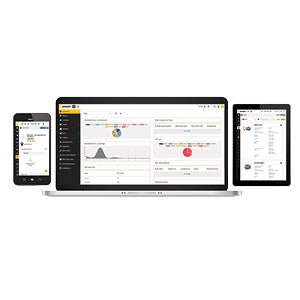
EXTRA EFFICIENCY
Maintenance teams use eMaint’s work order software for greater efficiency, letting teams effectively schedule, execute and create reports. Fluke Reliability
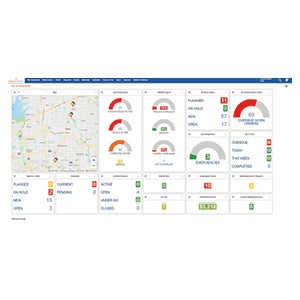
SMART SYSTEM
The Corrigo intelligence engine and application interface moves CMMS toward the future of digital facilities management. JLL Healthcare
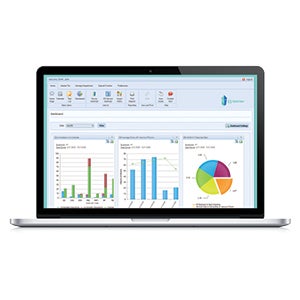
KEEPING IT CLEAN
Real-time dashboards in ES Optimizer show EVS progress as it happens. Smart Facility Software
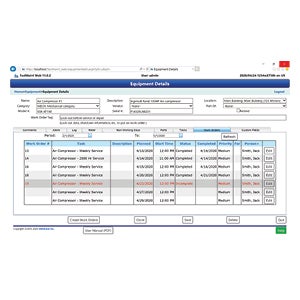
KEY DATA
FastMaint shows equipment with its associated work orders in a specified period. SMGlobal Inc.
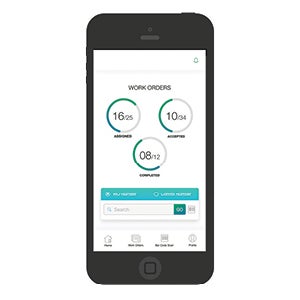
ALWAYS READY
The HEMS remote mobile app can be used anywhere, even in offline mode, to respond to work requests. EQ2 LLC
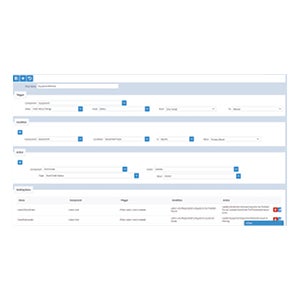
AUTOMATIC ALERTS
IMS 3 streamlines workflows by allowing users to set up automatic functionality and notifications inside the application. Phoenix Data Systems Inc.
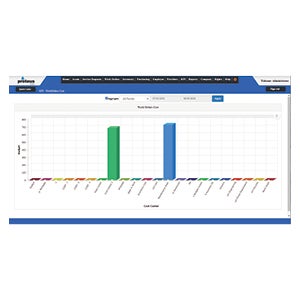
COST CONSCIOUS
Proteus MMX work orders key performance indicators provide insight into the cost associated with maintaining a facility. Eagle Technology
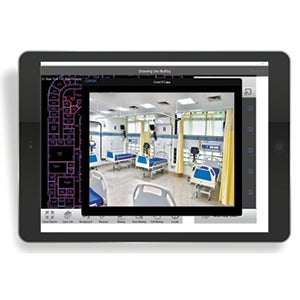
RAPID RESPONSE
zLinkFM visualization of space, capital asset inventory and resource utilization enables rapid reconfiguration decisions to meet changing patient load demands. zLink Inc.
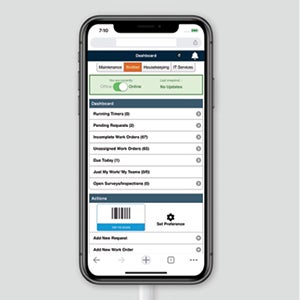
CLEAR VIEW
TheWorxHub is accessible by mobile devices and facilitates a clear hospital maintenance management workflow. Dude Solutions
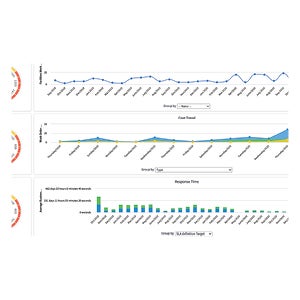
EYE ON MAINTENANCE
HFM Dashboard provides health care facilities managers with real-time visibility into all aspects of their maintenance activities. Nuvolo
Neal Lorenzi is a Mundelein, Ill.-based contributor to Health Facilities Management.


